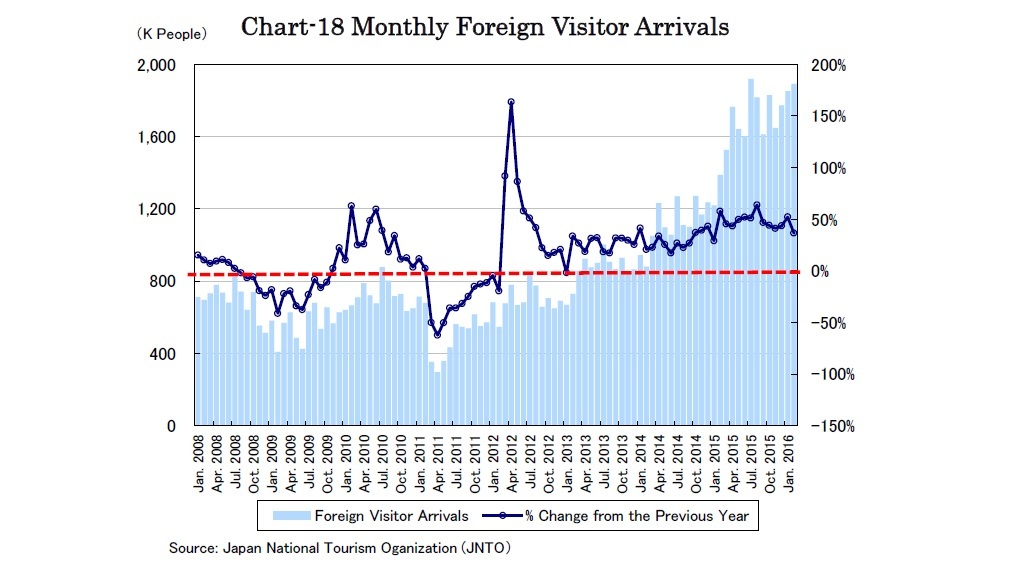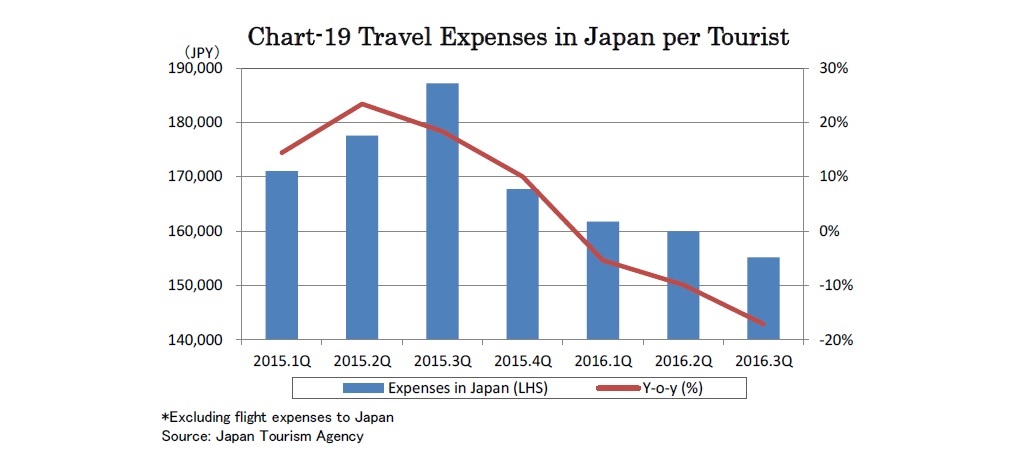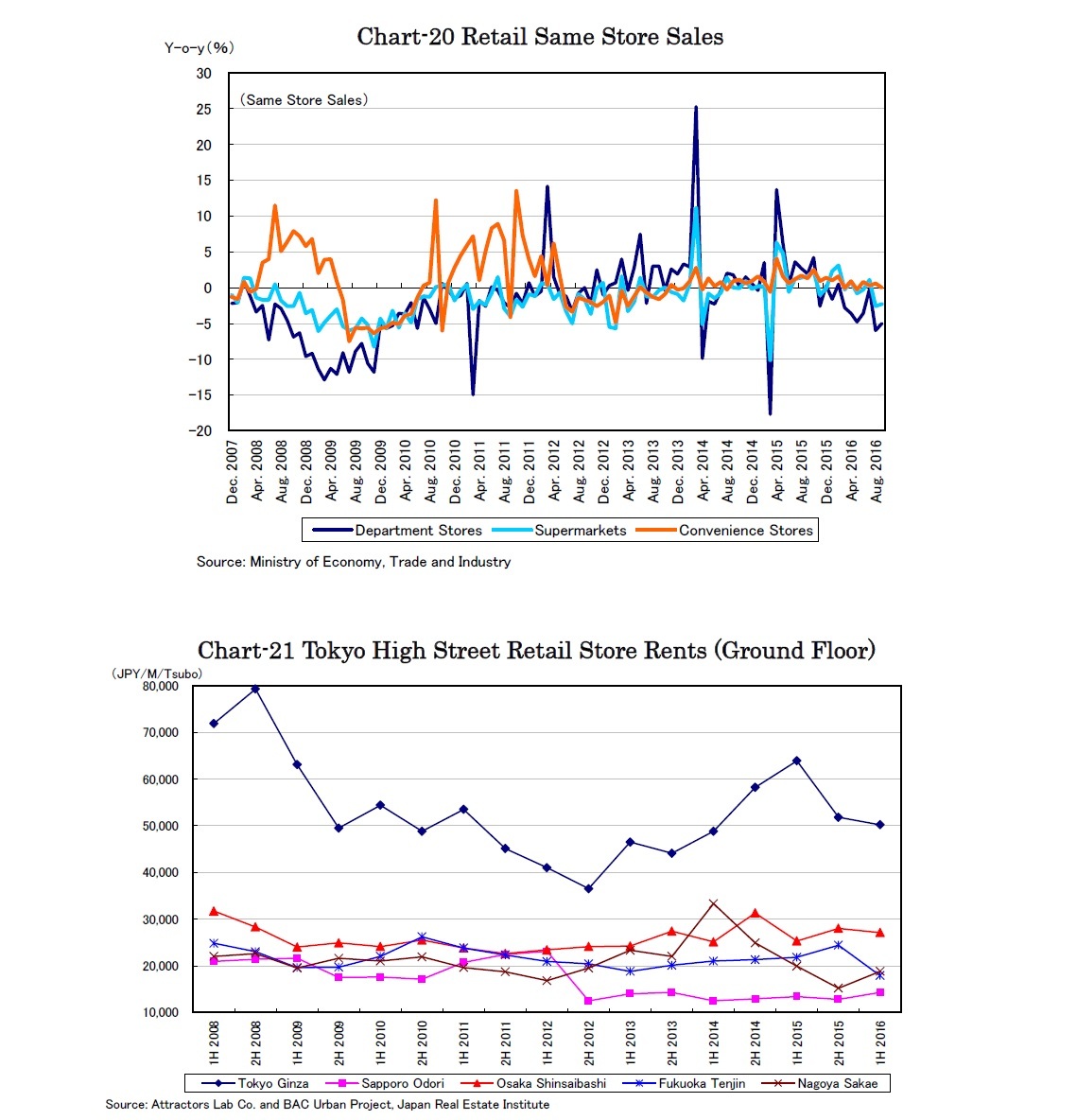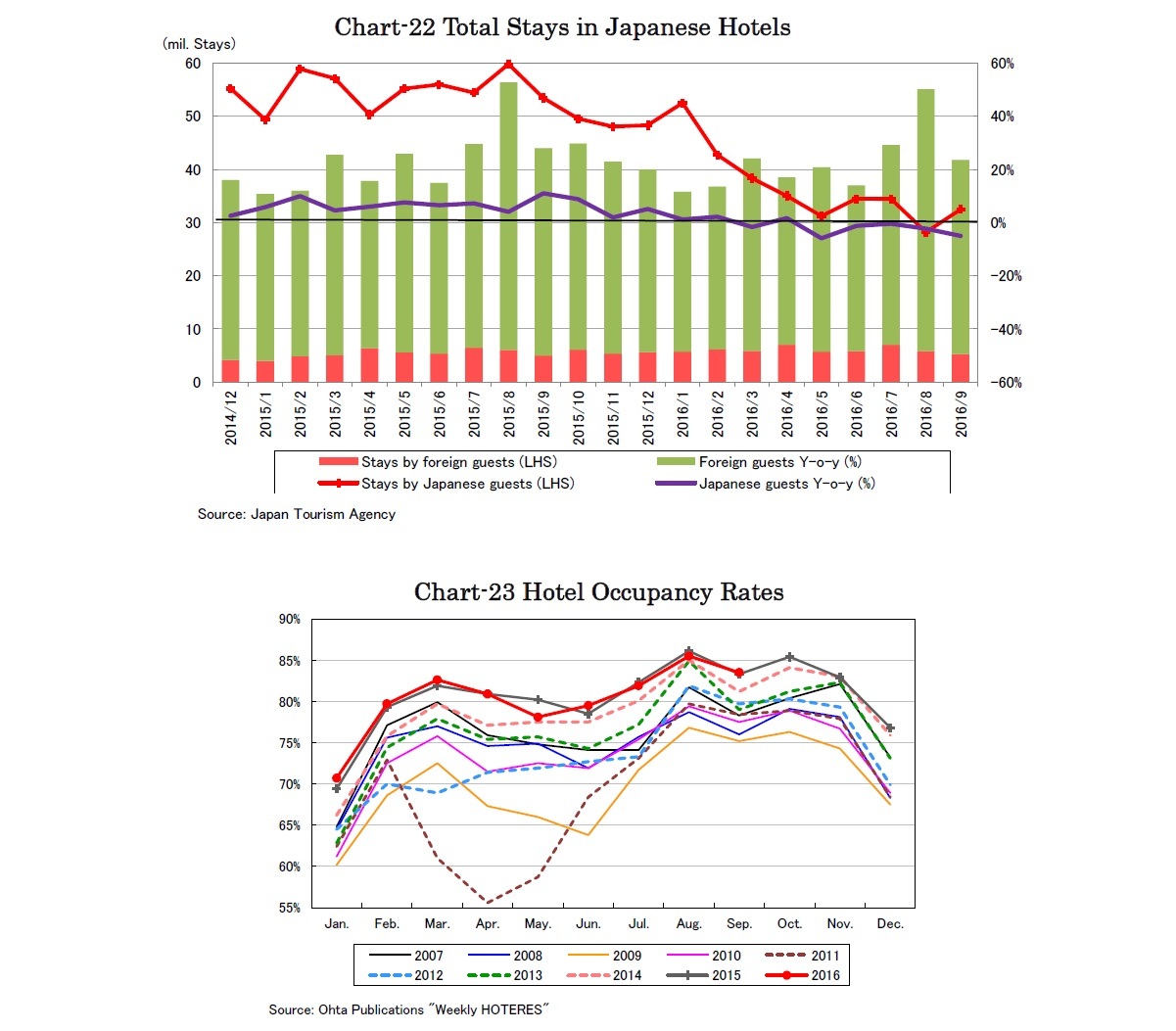- NLI Research Institute >
- Real estate >
- Japanese Property Market Quarterly Review, Third Quarter 2016-Inbound Demand Peaks Out Affecting Retail Stores and Hotels-
Japanese Property Market Quarterly Review, Third Quarter 2016-Inbound Demand Peaks Out Affecting Retail Stores and Hotels-
mamoru masumiya
Font size
- S
- M
- L
Foreign visitor arrival numbers have still grown at the pace of about +20% y-o-y in 2016 (Chart-18), increasing by 19% to 1.9 million in September, and 18 million for the year in 2016.
Visitor arrivals from South Korea increased the most at 42.8% y-o-y in September as a result of the recent launch of new airline routes. Visitor arrivals from ASEAN nations have also maintained strong growth such as Indonesia by 38.5% y-o-y, the Philippines by 31.3% and Thailand by 30.0%. Visitor arrivals from the U.S. and Canada also increased significantly by 26.9% and 24.8%, pushed by promotions for Japan.
However, visitor arrivals from China in September decelerated noticeably to a mere +6.3% y-o-y, affected by the cancellation of cruise ships due to typhoons, however, visitor arrivals from China in 2016 have increased by 30.5% y-o-y already reaching 5 million in September.
Duty free sales in department stores shrank significantly by 10.1% y-o-y for the sixth consecutive month in September, though the number of foreign customers still increased by 15.9% y-o-y.
Affected by weakening retail sales, retail store rents have also adjusted since the latter half of 2015, in particular in Ginza where many luxury brand stores are located (Chart-21).
mamoru masumiya
Research field
Social media account
レポート紹介
-
研究領域
-
経済
-
金融・為替
-
資産運用・資産形成
-
年金
-
社会保障制度
-
保険
-
不動産
-
経営・ビジネス
-
暮らし
-
ジェロントロジー(高齢社会総合研究)
-
医療・介護・健康・ヘルスケア
-
政策提言
-
-
注目テーマ・キーワード
-
統計・指標・重要イベント
-
媒体
- アクセスランキング





















